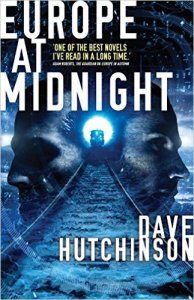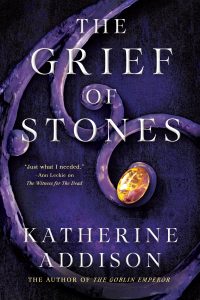Russell Letson Reviews American Science Fiction: Eight Classic Novels of the 1960s, Edited by Gary K. Wolfe
 American Science Fiction: Eight Classic Novels of the 1960s, Gary K. Wolfe, ed. (Library of America 978-1-59853-635-5, $75.00, 1,500pp, hc, boxed set) November 2019. Also available as American Science Fiction: Four Classic Novels 1960-1966 (Library of America 978-1-59853-501-3, $37.50, 738pp, hc) November 2019 and American Science Fiction: Four Classic Novels 1968-1969, (Library of America 978-1-59853-502-0, $37.50, 762 pp, hc) November 2019. Covers by Paul Lehr.
American Science Fiction: Eight Classic Novels of the 1960s, Gary K. Wolfe, ed. (Library of America 978-1-59853-635-5, $75.00, 1,500pp, hc, boxed set) November 2019. Also available as American Science Fiction: Four Classic Novels 1960-1966 (Library of America 978-1-59853-501-3, $37.50, 738pp, hc) November 2019 and American Science Fiction: Four Classic Novels 1968-1969, (Library of America 978-1-59853-502-0, $37.50, 762 pp, hc) November 2019. Covers by Paul Lehr.
Reviewing is generally a venture into the New, a peek over the horizon, an exploration of emerging talents and innovative work, or at least of what will be on the store shelves next week. But every literature has a past, and those of us old enough to have significant pasts of our own cannot help but feel all that wingèd time at our backs as we look at what’s unrolling in front of us. So this month’s books had me considering where I have been as a reader of science fiction, and feeling like maybe I did not misspend my youth. Well, not all of it.
There is currently a good bit of discussion in the field about the status of works of science fiction that appeared before many contemporary readers were born – questions not so much about the history of SF as about which of the works themselves are worth reading today. James Davis Nicholl has a long-running online project, Young People Read Old SFF, that does just what it says on the label; and elsewhere blog and forum discussions often turn on whether writer X or editor Y deserve our respect or even our attention any more. The results are not always flattering to the past.
The Library of America, on the other hand, has been making arguments in favor of some old SF, in the form of several single-author collections and a pair of two-volume, multi-novel compendia that cover crucial decades of the previous century. The latest, American Science Fiction: Eight Classic Novels of the 1960s, is a chronological sequel to American Science Fiction: Nine Classic Novels of the 1950s (2012). Like its predecessor, the 1960s collection is edited by Gary K. Wolfe and is designed to provide scholars, teachers, and libraries (to say nothing of plain old readers) with reliable, accessible, physically sturdy editions of representative works of SF from the target decade. These are not statistically representative items, I should point out, but examples of the kind of novels that show, as Wolfe’s introduction puts it, that science fiction could be “a sophisticated, culturally significant, and ultimately enduring genre.”
When I started including SF in my intro-to-lit courses nearly 50 years ago, text choices always came down to a compromise between what I thought would be useful or apt or interesting and what was available – there were short-form anthologies that persisted (or at least overlapped), but novels could and did go in and out of print unpredictably. The short-form part of that problem has since been answered by a number of classroom anthologies, but choosing non-current novels remains a challenge. The Library of America sets allow libraries and bookstores to keep what otherwise might be fugitive texts on their shelves, and their availability as individual volumes answers some practical and affordability problems. The editorial work is what one expects of scholar- and teacher-friendly work: careful choice of text sources, with textual-variant and explanatory annotations and author biographies at the back, and Wolfe’s lucid introductory essay providing historical-esthetic orientation.
This project is not quite an exercise in canon formation, partly because the question of why these novels and not those is tied up in practical constraints on Wolfe’s choices – length of text, availability of rights, existing single-author LoA volumes (thus no Dick, Le Guin, or Vonnegut). Nevertheless, the eight titles selected do demonstrate an impressive curve through the decade and show the range and variety of tropes and treatments and literary movements at large in the field. They are, in chronological order, Poul Anderson’s The High Crusade, Clifford D. Simak’s Way Station, Daniel Keyes’ Flowers for Algernon, Roger Zelazny’s …And Call Me Conrad (AKA This Immortal), R.A. Lafferty’s Past Master, Joanna Russ’ Picnic on Paradise, Samuel R. Delany’s Nova, and Jack Vance’s Emphyrio. The various publishing histories reflect how the environment had changed since the previous decade. The Anderson, Simak, Zelazny, and Vance were not written specifically for the magazines, but were serialized before being released by hardcover or paperback houses. The Delany might have followed a similar path had John W. Campbell not rejected the novel because he didn’t think the Analog readership could “relate to a black main character.” And now major publishers had dedicated SF lines – Doubleday’s aimed at libraries (and as a feeder for the Science Fiction Book Club) – while Ace, under Terry Carr, started the Science Fiction Specials as a prestige mass-market paperback line, and that is where the Lafferty and Russ first appeared. Flowers for Agernon has the most complicated history: it originated as a novella, was shortened and published as a short story in F&SF in 1959, and expanded and then revised several times for different publishers before it finally appeared as a hardcover novel in 1966.
Such textual/publication history is one of the virtues of this set. I wish it also had the very useful auxiliary feature that the 1950s set offered: a companion website with additional essays, a timeline, and a cover-art gallery. (That site is still up, at <sciencefiction.loa.org>.) On the other hand, this time Wolfe’s introduction is in print rather than online (in both volumes), which means it can’t vanish, should the internet roll over in its sleep.
Making the case for the literary virtues of SF of the 1960s is a bit easier than it is for the 1950s. This is, after all, the decade of the New Wave, of the debuts of Delany and Le Guin, of Dangerous Visions, of the entry of Vonnegut’s SF-inflected work into the literary mainstream. It was also a period when academics noticed the field and vice versa – Delany and Judith Merril both published crucial essays in Extrapolation. But these novels speak for themselves, even a half-century after they caught the attention of their original audiences, which included your correspondent – Way Station and The High Crusade are the only ones I did not read immediately and with great relish on first availability, and I quickly caught up with the Anderson as a paperback reprint. (The Simak I have now finally gotten around to, thanks to its inclusion here.)
I remember these novels, as well as many of those that couldn’t be included in the set, as part of exactly the artistic and commercial environment that Wolfe’s introduction outlines, even if at the time I was probably incapable of articulating that insight as precisely and confidently. The business of influence and importance is a tricky one – reputations come and go, and good books and good writers fall out of favor all the time. Projects such as the Library of America’s keep open windows onto the genre’s past and should provide cornerstones for serious collections, private or public.
This review and more like it in the November 2019 issue of Locus.
 While you are here, please take a moment to support Locus with a one-time or recurring donation. We rely on reader donations to keep the magazine and site going, and would like to keep the site paywall free, but WE NEED YOUR FINANCIAL SUPPORT to continue quality coverage of the science fiction and fantasy field.
While you are here, please take a moment to support Locus with a one-time or recurring donation. We rely on reader donations to keep the magazine and site going, and would like to keep the site paywall free, but WE NEED YOUR FINANCIAL SUPPORT to continue quality coverage of the science fiction and fantasy field.






